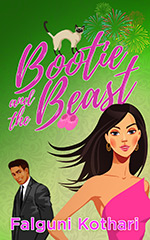A Writing Craft Workshop from RWA Conference 2019
Falguni Kothari and
Nisha Sharma
What
is brainstorming?
·
The process of generating creative ideas and
solutions through intensive and freewheeling group discussions
·
The process can be as holistic or logical as you
want it to be
·
Ideal will be to have a group to bounce ideas
off, which is why critique groups and writer communities play such an important
role in a writer’s career
Why
is brainstorming important to writing?
·
Whether you’re writing your first manuscript or
your 200th book, every writer needs to come up with ideas
·
You need
to have your brain firing on all cylinders at will because DEADLINES
·
You must have an idea of where to start, what
comes in the middle and what happens at the end
·
Even if you’re pantsing, you must have
rudimentary knowledge about your story, characters and setting, and of course,
the plot
But
what if you don’t have access yet to such groups, or have the time to reach
out? How do you brainstorm when you’re alone?
Exercises (solo)
-
Write a letter to your main character
-
Interview a character in your story
-
Create a fight scene between your antagonist and
protagonist without any dialog
-
Create your character’s genealogy
-
Start a Pinterest board that includes setting,
character descriptions/clothing, and images that represent elements of conflict
-
Ask the question game. What if? Finish each
‘what if’ sentence with the opposite of what your character would want
-
Freewriting and Galumphing with a list of random
words (noun, adjective, verb)
-
Read a poem and write a narrative that goes
along with it
-
Occupy yourself with mindless activities like
washing vessels, walking, showering and let your mind gallop free with ideas
Exercises (partner)
-
Write down a theme, a character, and a setting
(thirty seconds), then switch with a partner. Free write using those elements
for 5 minutes. Share your work
-
Pretend you are your character, going to a
therapy session. Have your friend be the therapist and ask questions about your
choices
-
Grab a packet of post its, and after sharing
each other’s premises, write whatever words come to mind. Take turns writing on
post its, going back and forth, and sticking them to a wall (or each other!)
When you run out of words, gather them up, and use your post it pile as prompts
Technology Resources for Brainstorming
-
Scapple- an app
by the creators of Scrivener
-
The Brainstormer- provides trigger
words/situations/scenarios to help you get ‘unstuck’
-
Mindnode- a mind-mapping tool
-
Lists for writers- provides writer prompts and
lists for brainstorming elements of a story
-
A novel idea- A place to write your ideas if
you’re stuck in an inconvenient location
Printed Resources for Brainstorming
-
Fool-proof Outline- Christopher Downing
-
Ultimate Novel Planning Workbook- Worksheets for
Writers
-
Writing the Breakout Novel- Workbook
-
GMC- Deb Dixon : a book for plotting and for
elements of a novel, but can also be used to understand story (use this in tandem
with the List for Writers app for best results!)
-
Fire up your writing Brain - Susan
Reynolds
Falguni and Nisha’s Tips
-
Start with a character. Develop a character
completely before writing a story. Free character guides are available online
if you want to use a template (Google: ‘character sketch/template for novels’
to find the one that suits your needs)
-
Start with a setting. Google Maps, Pinterest
again for bucket list locations, or local news
-
Start with the title. This one is a bit more
organic that has to do with the concept you’re dreaming about
-
If you’re stuck in the middle of the story, back
up 30 pages. You got off track 30 pages or less before the point of disaster.
Rewriting from an earlier point will help you get control of your novel again
-
If you’re stuck halfway through, it’s also a
good idea to remind yourself what your character’s goal, motivation, and conflict
is. Create a Punnett square (or Google a GMC grid) and take some time to
reflect on where you’d like to go
-
It’s also a good idea to think about what your
character is most afraid of, or what would be the worst thing to happen to the
couple in your story, and make that happen
-
Each heroine should have a strength and a
weakness, and each hero should be some form of/embodiment of that weakness, and
vice versa
-
Read outside your genre for inspiration: this
includes memoir, non-fiction, screenplays and poetry
-
Write out of order! Scrivener is a great tool
that can help you reorganize your book using the index card function, if you’re
tech savvy and want to try this method
Nisha Sharma
-
Twitter/Instagram: @nishawrites
-
Website
-
‘The Takeover Effect’- Avon Books
-
‘My So-Called Bollywood Life’- Crown Books for
Young Readers
Falguni Kothari
-
Twitter/Instagram: @AuthorFalguni
-
Website










